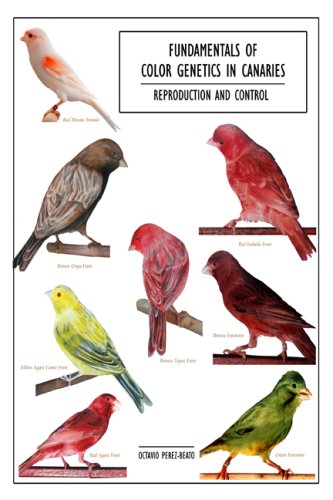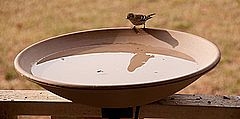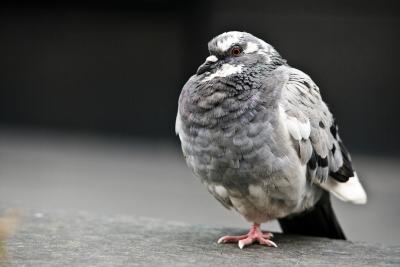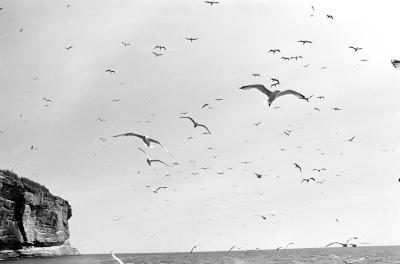The world is full of amazing species that have a roll in the overall balance of nature. But unfortunately, so many of these animals are becoming extinct. Whether it's the demolition of their habitats, or just accidental killings, the world is in the process of losing a number of interesting creatures. One of the latest animals that may not be around in 30 years is the albatross.
Albatrosses are large seabirds. They can range from the Southern Ocean and the North Pacific, but they are not present in the North Atlantic, although there is evidence that they were once there. Albatrosses are some of the biggest flying birds around and the great albatrosses have the longest wingspans of any birds in existence. Albatrosses resemble ducks from the neck up, but their beaks are rounder and hook at the end. They have strong legs and webbed feet, which makes them one of the best land travelers of their order.
The albatrosses spend most of their time at sea, including sleep. About the only time they leave the sea, is to mate. Albatrosses will usually return to their birthplace to breed and they normally mate for life. It may take up to 10 years, before the albatrosses breed, for the first time. Albatrosses only lay one egg and it's rare for them to lay an egg two years in a row. With the albatross, both parents will take turns nesting the egg, because depending on the size of the albatross, the incubation period could last up to 80 days. It can take the baby albatross from 6 to 9 months before it's ready to fly. Albatrosses have long life cycles, most of them live at least 50 years.
The albatross will usually feed on fish, squid and krill. For a long time, the albatross was only considered a surface feeder, which means that it fed off prey that was pushed to the surface of the water. But studies have proven that certain types of albatross will actually plunge dive into the water to snatch its prey. The albatross is also an opportunist; lots of times it will snatch up larger prey that's already been killed. The albatross mostly feeds during the day.
One of the greatest traits of an albatross, is its ability to fly long distances, without flapping its wings. The techniques the albatross uses are called, dynamic soaring and slope soaring. The albatross uses the wind near the ocean as energy to glide and it also turns into the wind to gain height and change direction. The albatross actually expends more energy during take-offs and landings than it does from flying.
The albatross is a majestic bird in flight, but its love of the sea may be the cause of its extinction. When fishermen catch fish, they throw out long-lines with baits attached to hooks. When the albatrosses see the baits, it's only natural that they try to catch them. Unfortunately, the albatrosses usually get caught on the hooks and drown. And if the albatrosses don't drown, some of them swallow the baited hooks. Many new regulations, about long-line fishing, are being passed. Hopefully these measures will help reduce the unnecessary deaths of so many albatrosses.

 A Guide to Colour Group Canaries
The Three Canary Groups - Co
A Guide to Colour Group Canaries
The Three Canary Groups - Co
 How to Create a Bird Bath For Little or No Cost
How to Create a Bird Bath For Little or No Cos
How to Create a Bird Bath For Little or No Cost
How to Create a Bird Bath For Little or No Cos
 How to Remove Bird Droppings
How to Remove Bird Droppings
How to Re
How to Remove Bird Droppings
How to Remove Bird Droppings
How to Re
 Bird on a Branch: The Great Blue Heron
Credit: Anrod52 Photos
A Great Blue Heron is a
Bird on a Branch: The Great Blue Heron
Credit: Anrod52 Photos
A Great Blue Heron is a
 How to Help a Bird That Flew Into the Window
How to Help a Bird That Flew Into the Window
How to Help a Bird That Flew Into the Window
How to Help a Bird That Flew Into the Window